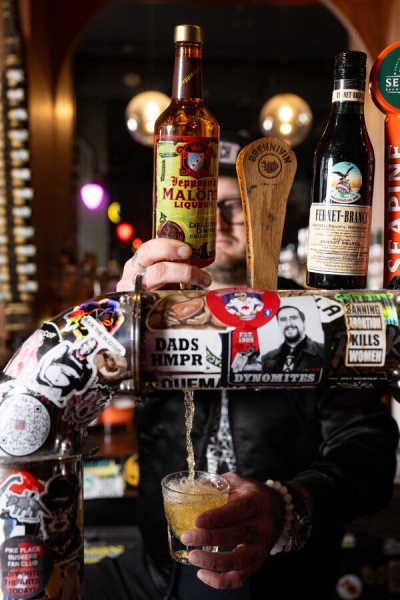The divisive yet beloved liquor, once available only in Chicago, has gained devotees nationally. Can it retain its roots?
Listen to this article · 6:29 min Learn more
Malört is, in one word, unforgiving. Made from neutral spirits, wormwood and sugar, it tastes a little like sucking dandelion juice through a straw made of car tires. It is also kind of good. Intensely bitter, it’s herbaceous and a touch citrusy, as if you were to bite a grapefruit like an apple.
It is also, in five words, the unofficial liquor of Chicago.
Carl Jeppson, a Swedish immigrant to the city, peddled Jeppson’s Malört as a digestif as early as the 1930s. “It was the only liquor to survive Prohibition because no one believed that a human being would drink that on purpose, and that it had to be medicinal,” said J.W. Basilo, the manager of the Promontory and a bartender in Chicago for more than 20 years.
Around a decade ago, career bartenders like Mr. Basilo began embracing Malört as a symbol of industry cool. They liked that it was only 35 percent alcohol by volume, so you could down several shots in a shift and still manage to count change.
Locals liked that it had an unfriendly edge, and that you could get it only in Chicago. Tasting of citrus pith and pencil shavings, it became the designated initiation shot, something you downed to prove your Midwest mettle — a difficult drink for a difficult place to live.
But in recent years, Malört has built a following in seemingly unlikely locales, popping up in cities like Seattle, New Orleans and Denver, as a devoted group of Malört evangelists takes the dispiriting spirit a little more seriously.
Thank you for your patience while we verify access.
